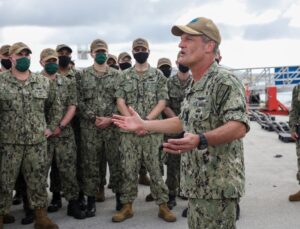
The Navy’s attack submarine (SSN) force is at a low point that is worsened by a backlog in maintenance and that technological development work is taking too long, a top Navy submarine official said this week. “Right now I'm at a low point in my fast attack numbers, I’m at 47 SSNs,” Rear Adm. Jeffrey Jablon, Commander of Submarine Force at U.S. Pacific Fleet said Feb. 16 during a panel of the West 2022 conference in San Diego. The West…

 By
By 











